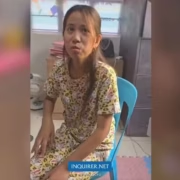Sustainable Philippine transport system

The Philippine transportation sector alone contributed 35.42 million tons of carbon emissions in 2022. It is also the country’s largest source of air pollution, negatively affecting health and economic development in the country. Piling on is the continuously worsening transport conditions, especially in urban areas across the country.
Driven by the pressing need to address these issues and deliver a better way of living to Filipinos, the Philippine government enacted the Electric Vehicle Industry Development Act (EVIDA) and initiated the Public Utility Vehicle Modernization Program (PUVMP), now renamed as Public Transport Modernization Program, through the lead of the Department of Transportation (DOTr). However, to bring real, sustainable change, we need the participation of the entire transport ecosystem on board, including policymakers, transport workers, and commuters.
Transitioning to a more resilient, cleaner, low-carbon transport fleet, including PUVs, depends on a crucial precondition: the consolidation of all transportation industry players. Achieving a just transition to a more sustainable transportation industry requires every stakeholder to be actively engaged. Who can adopt these changes? Who can actually afford to shift?
Why consolidation matters. First, let us look at the state of the operations of jeepneys in the country, where 19 percent are only one-unit operations, making it difficult to implement policies and leading to laborious communications for both operators and drivers, as well as other industry managers (such as local government units, Land Transportation Franchising and Regulatory Board, Office of Transportation Cooperatives, and DOTr). The current state of jeepney operations itself makes it unwieldy for any sort of regulation. Consolidation could simplify operations, enabling more coordinated route planning and streamlined management.
The second point highlights the consolidation of transport industry players that also leads to a consolidation of operations, such as coordinated dispatching and the implementation of local public transport route plans, ultimately achieving operational efficiency. Streamlining these operations means ease in operations, which facilitates smoother management, better data tracking, improved financial monitoring, and more effective administration, fostering the necessary improvements for transport fleets.
Lastly, consolidation ensures inclusive participation in the transition, from drivers, operators, and assistants, to those working in the administrative side of cooperatives, and all other industry players. By consolidating, a sense of ownership and accountability is cultivated, particularly among jeepney drivers as cooperative members, empowering them to be part of the decision-making process and giving them the capacity to manage themselves and have a stake in their livelihood and futures. Furthermore, consolidation provides a platform for integrating diverse perspectives and expertise, leading to more innovative and effective solutions, with cooperatives having stronger negotiation powers when advocating for public investment support.
Building a better system. The present condition of the Philippine public transport system is indispensable to the desired transition from more sustainable, in this case, electric forms of transportation—to a better public transportation system. A good public transportation system is defined by reliability, accessibility, safety, and security.
National government agencies, like the DOTr, have already been striving to create such changes through the PUVMP, railway developments, the Motor Vehicle Inspection System, and the implementation of the EVIDA law, which provides a framework for the transition to electric vehicles. While many of these programs have yet to reach full implementation, these are the systems currently in place that equip the Philippines in the transition to just energy resources and to a better public transportation system.
Another important caveat in this conversation is that achieving a low-carbon society and just energy transition in transportation requires more than focusing on a single technology approach. Transport is all about choices. The electric vehicle industry alone cannot drive the necessary change, it must be complemented by other forms of public transportation and active transport.
The imperative to consolidate is clear and crucial. It is not just a technical necessity, but a pathway to inclusive growth where all stakeholders benefit from the transition, and where we can truly create an inclusive and sustainable system for public transportation.
Improving public transportation, by making it cleaner, safer, and more accessible, will directly enhance the quality of lives of Filipinos.
—————-
Dr. Ma. Sheilah Gaabucayan-Napalang is a professor and the current director of research and publication at the University of the Philippines School of Urban and Regional Planning. She previously served as DOTr’s Assistant Secretary for Planning and Project Development from 2019 to 2022.

















